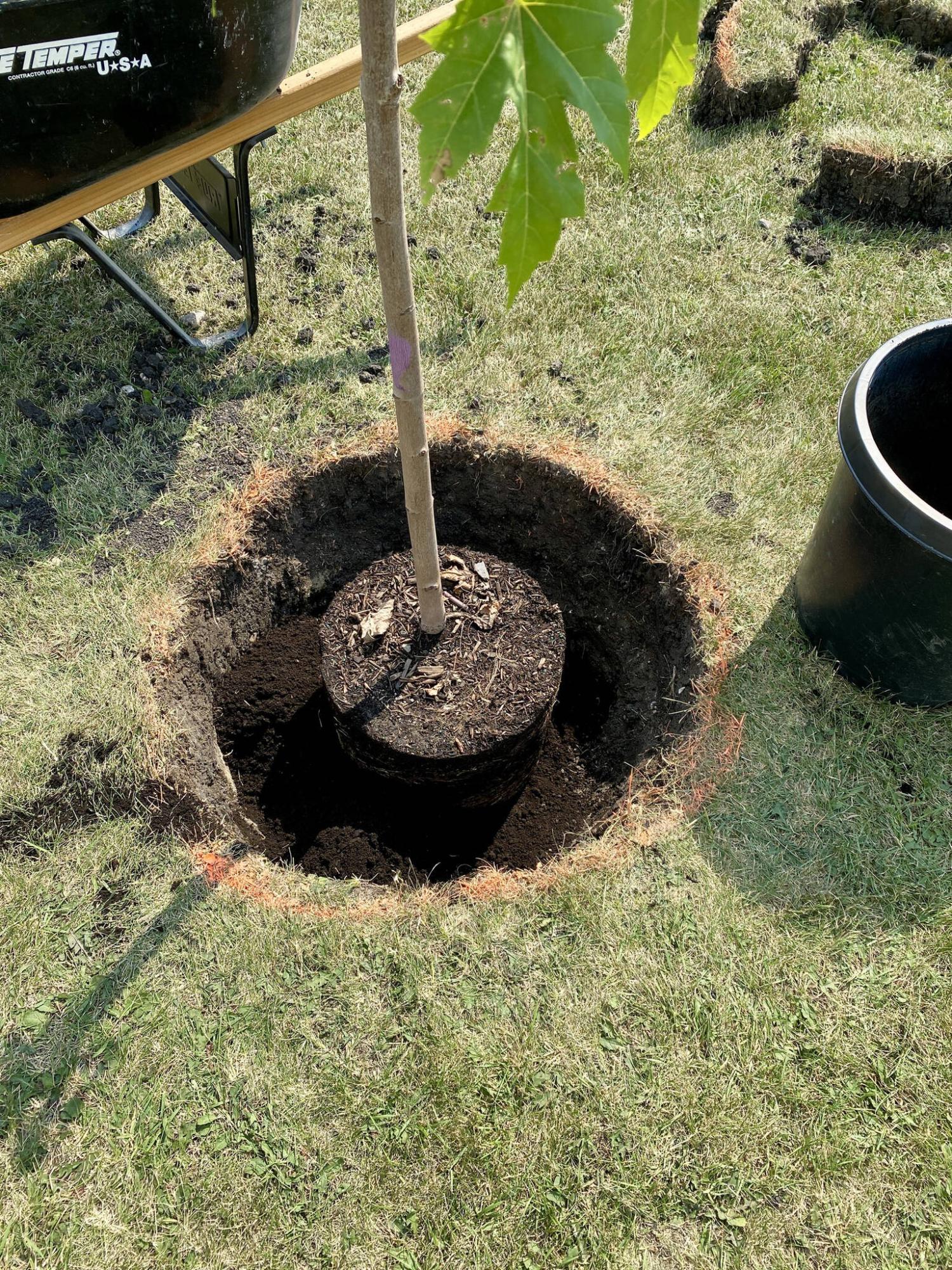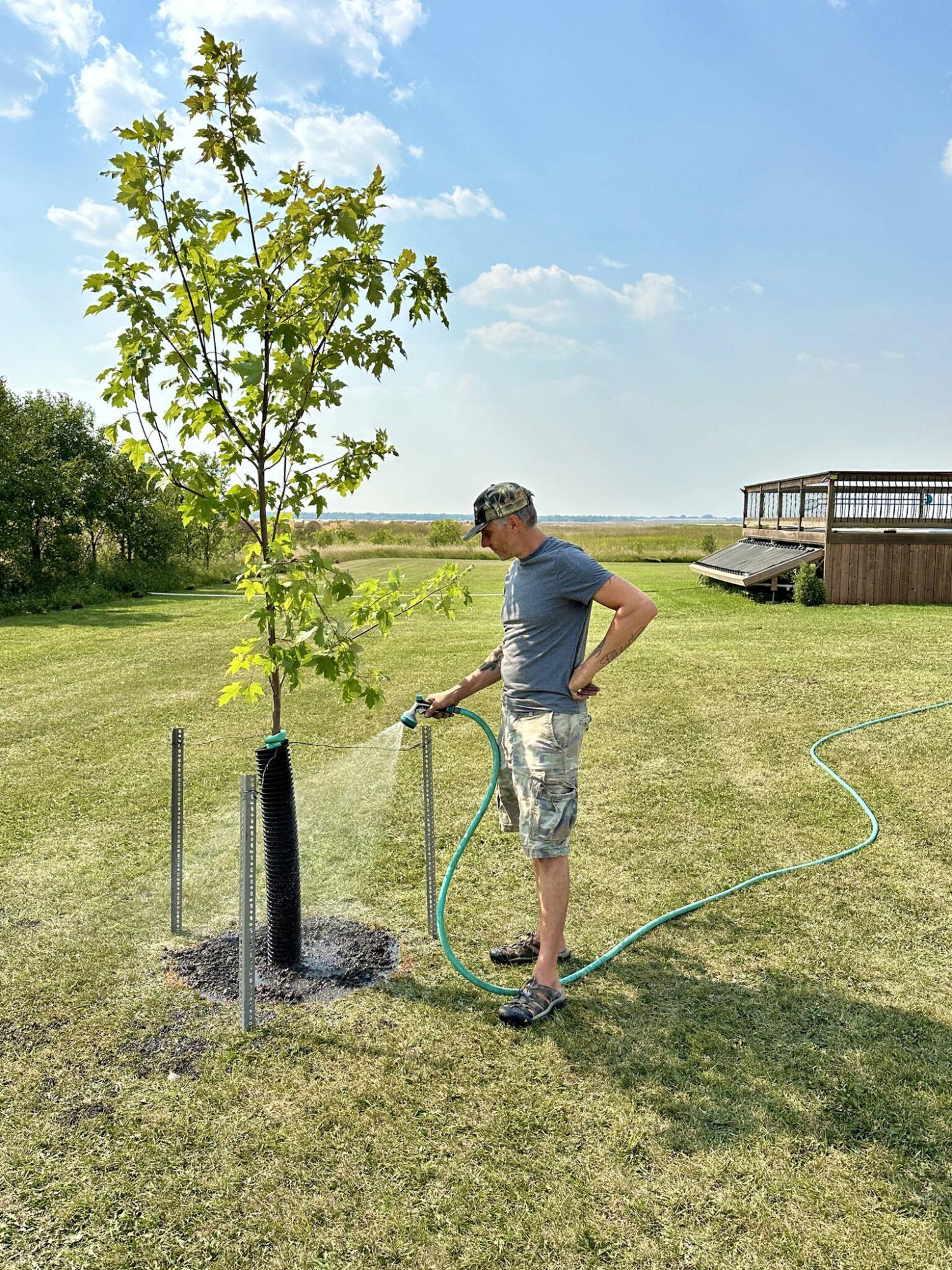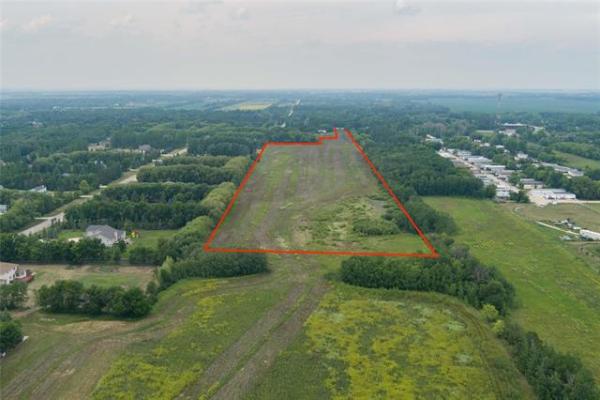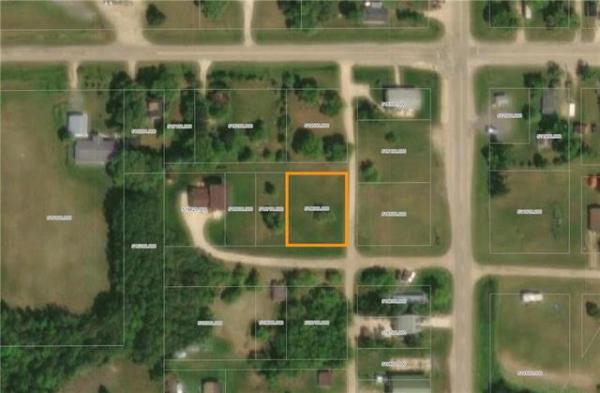
Marc LaBossiere / Free Press
The hole is prepped to twice the diameter of the tree’s root ball, whereby top soil will be packed in to fill the gap.

Marc LaBossiere / Free Press
After the planting process is complete, the new maple tree receives a generous drink for the first time (and first of many) on the property.
I’m no stranger to planting trees. And anyone who knows me well recognizes my love of the process. On my property, over 3,000 trees have been planted throughout the years, a good chunk of which have recently begun to really flourish despite some dry seasons earlier on.
During a chat on this very topic at a recent jobsite, the homeowner graciously offered up some pine tree samplings of nine to 12 inches that could be transplanted, if I wished. I humbly accepted the offer and made the proper arrangements.
On the Friday morning before the September long weekend, my wife Carole and I drove back to the jobsite property, with two dozen, two-gallon planting pots. Of the 42 pine tree samplings that we dug up, 24 are white pine, 12 are scotch pine and the remaining 6 are balsam pine. The little trees were immediately and strategically planted along my existing tree lines the moment we returned home, at roughly 10-foot intervals in various locations. After giving them all a healthy drink of water, a soothing calm washed over me, much like the moments I recall from years gone by, after planting several hundred trees on the property to create a shelter-belt to minimize the effects of the all too familiar prairie winds.
Only time will tell whether these samplings will “take” — surviving the winter cold and harsh winds will be the true test of their fate. In my experience, trees that should have survived did not, whereas others sprouted up out of nowhere, simply because seeds “grabbed” where they fell. Nature, it seems, tends to play with my obsessive need for lineal order and is impossible to predict.
Nonetheless, our pre-September long weekend adventure definitely got my tree-planting juices flowing once again. So much so, that Carole and I drove to a local greenhouse on the Saturday to look at some ornamental tree prospects. Although a few “decorative trees” had been planted on my property in the past, they did not fare well during several untimely dry spring seasons. Upon their demise, I hadn’t really entertained the thought of an ornamental tree until this past September long weekend. As we walked along the endless rows of trees for sale, the one that caught our attention was a glorious 12-foot maple, whose leaves had already begun to hint the red-hue of autumn. We pondered it that evening and returned the next day to purchase the tree, which would be planted in the yard, centered between the existing tree-line and the south-side addition of the house.
The planting process was familiar, with extra care given to ensure the more mature tree’s success. We were advised by the staff at the greenhouse to prep a hole to the exact depth of the tree’s root ball height, with a diameter twice that of the diameter of the tree pot. The hole was dug by hand using a spade shovel, to a depth slightly deeper than required, so that fresh topsoil could be used to fill the hole slightly to meet the prescribed height recommendation. The same soil was then used to fill the gap between the sides of the root ball and the inner walls of the freshly dug hole.
The soil was packed down in stages using a sledge-hammer, the give the new soil rigidity to hold the tree upright. Three angle-iron posts were also pounded into the neighboring soil, so that three wires with protective sheathing could then be wrapped around he tree trunk, each respectively attached to the angle-iron posts to further enhance rigidity in the early years, which allows the tree the best chance to properly root into the main soil beyond the fresh topsoil. The tree received a very healthy watering that evening and all trees have continued to routinely get a drink (unless of course it rains, which it has not much lately).
It’s not as though I need extra responsibilities in my life — things remain extremely hectic at the moment, especially with a rigorous work schedule that involves trying to wrap up existing exterior build projects before the snow flies, allowing a timely commencement of pre-booked interior projects. I find the half-hour or so it takes to ensure the new trees get their needed water rather soothing as though for a brief moment, my mind clears as I become one with nature, with one purpose. We truly hope all the trees make it through the winter. No matter, the process is as rewarding as a potentially successful outcome — only time will tell.



